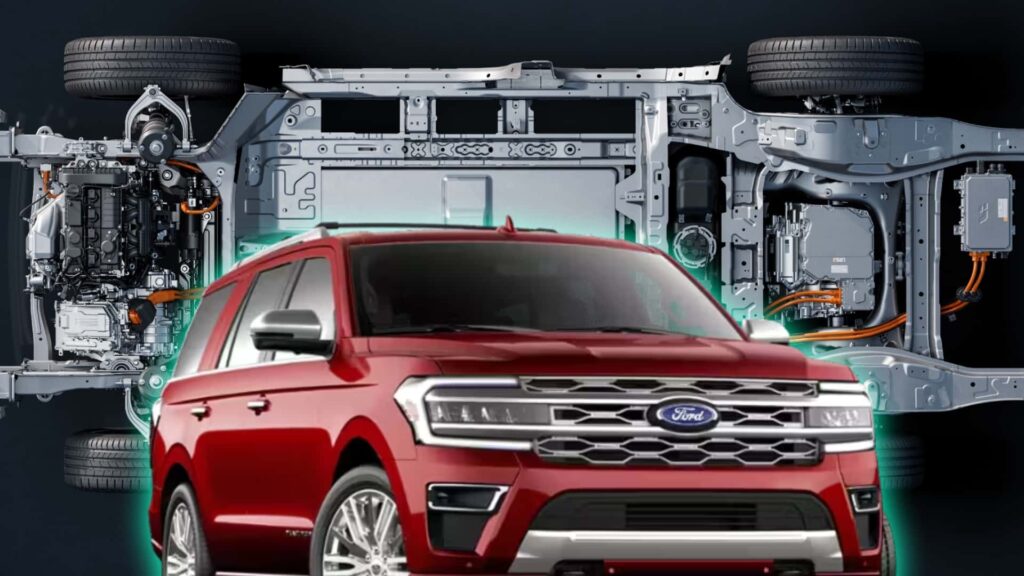- Extended-range electric vehicles (EREVs) are a step between hybrids and EVs, with internal combustion motors that act as generators on longer trips.
- The technology may help Ford get around an “unsolveable” economics problem with large EV trucks: Consumers won’t pay for the super-sized batteries they require.
- Ram, Scout and General Motors are also betting on EREVs.
Extended-range electric vehicles will be essential to the American market, Ford CEO Jim Farley said on the company’s earnings call Wednesday. The reason is simple: “Americans love their big cars. They love their big trucks,” he said.
An extended-range EV, or EREV, is a technology that bridges the gap between a conventional hybrid and an electric vehicle. These cars operate as purely electric vehicles, with all of the vehicle’s propulsion coming from electric motors. But they also carry an internal-combustion engine to act as a generator for electricity, allowing them to handle road trips and long distances without needing a gargantuan battery. You can fill them up in a couple of minutes at a gas pump and get back on the road.
It’s not a new concept. BMW offered a range extender for the electric BMW i3 over a decade ago, and people broadly liked it. But it’s a concept that’s gotten a lot of attention recently as a solution to Farley calls the “unsolvable” problem with fully electric large trucks. These vehicles need supersized batteries to provide the capability consumers expect, which drives up prices.
He says consumers have proven that they won’t pay a premium for an EV, leaving automakers in a bind. Consumers demand and love large vehicles, but there’s no way to make electric versions profitably at a price truck and large SUV owners will pay. EREVs, Farley says, may be a solution. And they’re not perceived as a half-step, like hybrids.

Photo by: Scout Motors
The Scout Terra will offer a gasoline-powered range extender.
Farley said EREV customers they talked to in China “thought of these vehicles as EVs.”
“They do not think of them as hybrids or plug-ins,” he said. “These are electric vehicles. 95% of [their miles are] electric, and they plug them in every night and the satisfaction is even higher because they’re more affordable.”
Automakers can use smaller batteries in these applications than they would for a similar-sized EV. Because they don’t need to blend the powertrains like in a hybrid, it’s also simpler to add a range extender, further reducing cost.
“Because there’s no transmission, there’s no gears, no drive line, there’s no axles, duplicate axles, there’s no duplicate power train. The incremental investment of fitting that combustion engine in there is very minimal to the customer,” he said.
EREVs also provide a lot of the benefits of the EV experience. They’re still as quiet as EVs when their range extenders aren’t running. They give you the instant, drama-free acceleration of an EV, and the benefit of pre-heating and pre-cooling with no tailpipe emissions.
“This technology gives them the electric experience without the range anxiety,” he said.

Photo by: InsideEVs
The 2025 Ram 1500 Ramcharger
As for whether or not customers respond, we’ll have to see. The first U.S. EREV truck, the Ram 1500 Ramcharger, is due out this year. The Scout Terra is scheduled to launch in 2027. So clearly Ford isn’t the only one betting on this horse. But everyone bet on big-battery EV trucks already, and so far those gambles haven’t paid off. We’ll have to see if EREVs are any different.
Contact the author: Mack.hogan@insideevs.com.

